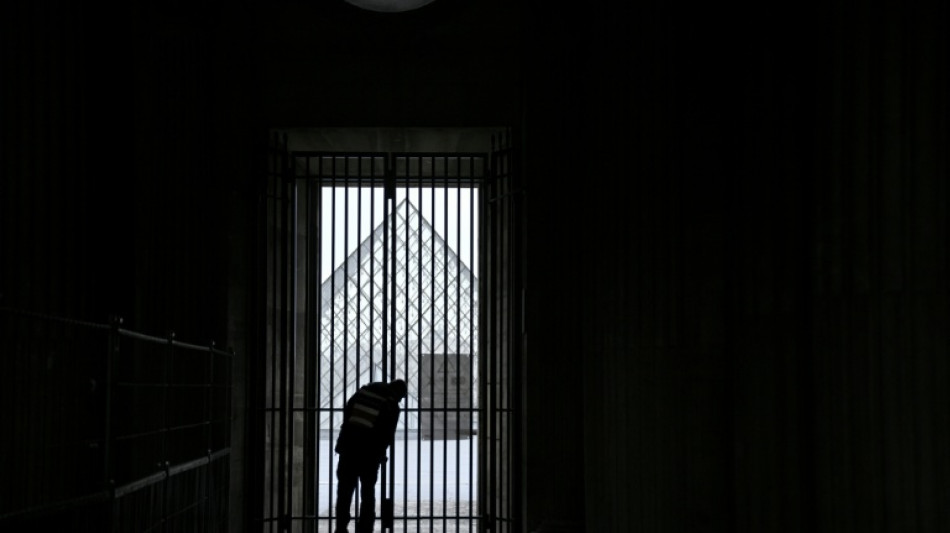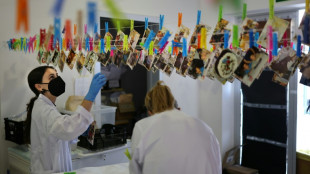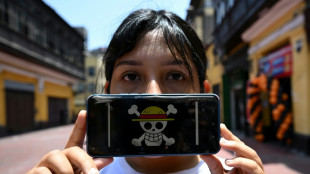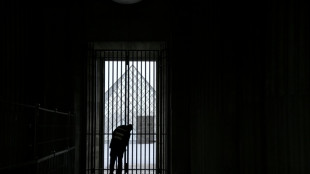

France intensifies hunt for Louvre raiders
French police stepped up the hunt Tuesday for thieves who stole priceless royal jewels from the Louvre museum in a spectacular daylight robbery.
As the museum remained closed for a second day Monday, officials said 60 investigators were working on the theory that an organised crime group was behind the raid in which nine pieces of jewellery were taken. A crown covered in more than 1,300 diamonds was dropped in the streets of Paris as the robbers fled.
Detectives scoured video camera footage from around the Louvre as well as of main highways out of Paris for signs of the four robbers who escaped on scooters on Sunday morning.
"There are a lot of videos and this is one of the investigators' lines of work," said Interior Minister Laurent Nunez.
But as disappointed tourists rebooked tickets to the world's most visited museum, the heist -- which lasted just seven minutes -- also reignited a row over the lack of security in French museums, after two other institutions were hit last month.
Justice Minister Gerald Darmanin admitted to security flaws at the Louvre.
"What is certain is that we have failed, since people were able to park a furniture hoist in the middle of Paris, get people up it in several minutes to grab priceless jewels, giving France a terrible image," he told France Inter radio.
Nunez has ordered better protection around cultural sites, his advisers said.
A report by France's Court of Auditors seen by AFP covering 2019 to 2024 points to a "persistent" delay in security upgrades at the Louvre. Only a fourth of one wing was covered by video surveillance.
The thieves arrived at around 9:30 am (0730 GMT) on Sunday, 30 minutes after the museum opened.
They parked a truck with an extendable ladder, like those used by movers, below the museum's Apollo Gallery, clambering up and using cutting equipment to get through a window and open the display cases.
The world-famous institution, whose extensive collections include the Mona Lisa, may not open again until Wednesday, as it is usually shut on Tuesdays.
Queues of impatient visitors had snaked their way across the museum's pyramid courtyard and under the tall arches of the main entrance gallery, hoping to get in Monday.
US tourist Jesslyn Ehlers, 38, and her husband rushed to rebook their tickets.
"We're just kind of disappointed. We've been planning this for a very long time," she said.
Carol Fuchs, another US tourist, had been standing in line for more than three-quarters of an hour.
"The audacity, coming through a window," she told AFP. "Will they ever be found? I doubt it. I think it's long gone," she said.
- Diamonds, sapphires missing -
The masked thieves dropped and damaged the crown of Empress Eugenie, the wife of Napoleon III, as they made their escape. It is covered in 1,354 diamonds and 56 emeralds, according to the museum's website.
But eight priceless items of jewellery were taken, according to the culture ministry.
The list they released included an emerald-and-diamond necklace that Napoleon I gave his wife, Empress Marie-Louise.
Also stolen was a diadem that once belonged to the Empress Eugenie, which is dotted with nearly 2,000 diamonds, and a necklace that once belonged to Marie-Amelie, the last queen of France. It is adorned with eight sapphires and 631 diamonds, according to the Louvre's website.
The loot would be impossible to sell on in its current state, said Alexandre Giquello, president of the auction house Drouot.
The raid -- which saw some 2,000 people evacuated from the museum -- is thought to have been carried out by an experienced team, possibly "foreigners", Nunez has said.
The intervention of museum staff forced the thieves to flee, leaving behind some of the equipment used in the raid, the culture ministry said.
It was the first theft from the Louvre since 1998, when a painting by Camille Corot was stolen and never seen again.
France's museums have previously come under criticism for poor security, with many viewed as being less secure than banks and seemingly increasingly targeted by thieves.
Last month, criminals broke into Paris's Natural History Museum, making off with gold samples worth $700,000.
The same month, thieves stole two dishes and a vase from a museum in the central city of Limoges, the losses estimated at $7.6 million.
T.Bastin--JdB



